| Date | Text | |
|---|---|---|
30 Nov 1913

Sinope |
Sinope (astronomy and space ) Sinope, the outermost known moon of Jupiter, is discovered by Seth Barnes Nicholson at Lick Observatory. |
|
30 Nov 1913

refracting telescope |
refracting telescope (astronomy and space ) A 76 cm refracting telescope is built at Allegheny Observatory in Pittsburgh, Pennsylvania. It is the fifth largest refractor in the world. |
|
30 Nov 1913
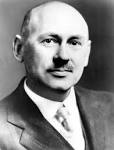
Robert Goddard |
Robert Goddard (astronomy and space ) Robert Goddard begins building rockets. |
|
30 Nov 1913

Walter Sydney Adams |
Walter Sydney Adams (astronomy and space ) Walter Sydney Adams determines an incredibly high density for Sirius B. |
|
30 Nov 1913
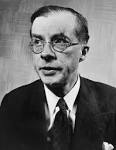
Julian Huxley |
Julian Huxley (biology and medicine) Julian Huxley publishes The Courtship Habits of the Great Crested Grebe, a key text in ethology. |
|
30 Nov 1913

John Joly |
John Joly (biology and medicine) John Joly develops a method of extracting radium and applying it in radiotherapy. |
|
30 Nov 1913

Edward Calvin Kendall |
Edward Calvin Kendall (biology and medicine) Edward Calvin Kendall isolates thyroxine. |
|
30 Nov 1913
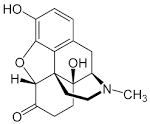
Oxymorphone |
Oxymorphone (biology and medicine) Oxymorphone, a powerful narcotic analgesic closely related to morphine, is first developed in Germany. |
|
30 Nov 1913

Pascoite |
Pascoite (mineralogy) Pascoite is first described. |
|
30 Nov 1913

Ernest Rutherford |
Ernest Rutherford (physics) Ernest Rutherford suggests that the positively charged atomic nucleus contains protons. |
|
30 Nov 1913

Kodak |
Kodak (technology) Kodak introduce the Autographic system. |
|
30 Nov 1913

Nadezhda Olimpievna Ziber-Shumova |
death Nadezhda Olimpievna Ziber-Shumova Nadezhda Olimpievna Ziber-Shumova, Russian chemist |
|
24 Jan 1914

Sir David Gill |
death Sir David Gill Died 24 Jan 1914 at age 70 (born 12 Jun 1843). Scottish astronomer known for his measurements of solar and stellar parallax, showing the distances of the Sun and other stars from Earth, and for his early use of photography in mapping the heavens. His early training in timekeeping as a watchmaker led to astronomy and he designed, equipped, and operated a private observatory near Aberdeen. To determine parallaxes, he perfected the use of the heliometer, a telescope that uses a split image to measure the angular separation of celestial bodies. In 1877, Gill and his wife measured the solar parallax by observing Mars from Ascension Island. He was appointed Her Majesty's Astronomer at the Cape of Good Hope (1879-1906). Gill also made geodetic surveys of South Africa. In fact he carried out all of the observations to measure the distances to stars in terms of the standard meter. His precise redetermination of the solar parallax was used for almanacs until 1968. |
|
24 Jan 1914

David Gill |
death David Gill Sir David Gill (born 1843), Scottish astronomer. |
|
03 Feb 1914
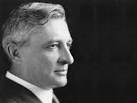
W. H. Carrier |
W. H. Carrier (technology) W. H. Carrier patents design of the air conditioner. |
|
05 Feb 1914

Sir Alan Hodgkin |
birth Sir Alan Hodgkin Born 5 Feb 1914; died 20 Dec 1998 at age 84. Alan Lloyd Hodgkin was an English physiologist and biophysicist who shared (with his countryman Sir Andrew Huxley and Australian scientist Sir John Eccles) the Nobel Prize for Physiology or Medicine in 1963, for the discovery of the chemical processes involved in nerve conduction, more specifically, discoveries concerning the ionic mechanisms involved in excitation and inhibition in the peripheral and central portions of the nerve cell membrane. Hodgkin and Huxley performed their work on the so-called giant axon of Atlantic squid, Loligo pealei, which enabled them to record ionic currents, which would otherwise have not been possible in almost any other neuron, such cells being too small to study by the techniques of the time. |
|
05 Feb 1914

Alan Hodgkin |
birth Alan Hodgkin Alan Hodgkin (died 1998), English physiologist, winner of the Nobel Prize in Physiology or Medicine (1963). |
|
22 Feb 1914
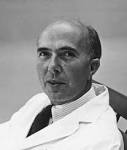
Renato Dulbecco |
birth Renato Dulbecco Renato Dulbecco (died 2012), Italian-born virologist, winner of the Nobel Prize in Physiology or Medicine (1975). |
|
23 Feb 1914
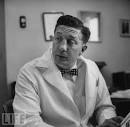
Robert Joseph Huebner |
birth Robert Joseph Huebner Born 23 Feb 1914; died 26 Aug 1998 at age 84. American virologist whose theory that certain genes, which he called oncogenes, are involved in cancer focused researchers' attention on finding them. His investigations paved the way for the discovery of viral causes of cancers and several other serious diseases and for the development of a number of vaccines and treatments |
|
05 Mar 1914

He Zehui |
birth He Zehui He Zehui (died 2011), Chinese nuclear physicist. |
|
08 Mar 1914

Yakov Borisovich Zel'dovich |
birth Yakov Borisovich Zel'dovich Yakov Borisovich Zel'dovich (died 1987), Russian astrophysicist. |
|
25 Mar 1914

Norman Borlaug |
birth Norman Borlaug Norman Borlaug (died 2009), American agronomist, humanitarian and Nobel laureate. |
|
27 Mar 1914
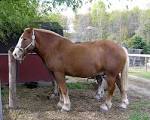
Belgian |
Belgian (biology and medicine) Belgian surgeon Albert Hustin makes the first successful non-direct blood transfusion, using anticoagulants. |
|
30 Mar 1914

John Henry Poynting |
death John Henry Poynting Died 30 Mar 1914 at age 61 (born 9 Sep 1852). British physicist who introduced a theorem (1884-85) that assigns a value to the rate of flow of electromagnetic energy known as the Poynting vector, introduced in his paper On the Transfer of Energy in the Electromagnetic Field (1884). In this he showed that the flow of energy at a point can be expressed by a simple formula in terms of the electric and magnetic forces at that point. He determined the mean density of the Earth (1891) and made a determination of the gravitational constant (1893) using accurate torsion balances. He was also the first to suggest, in 1903, the existence of the effect of radiation from the Sun that causes smaller particles in orbit about the Sun to spiral close and eventually plunge in. |
|
16 Apr 1914
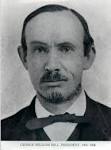
George William Hill |
death George William Hill George William Hill (born 1838), American astronomer. |
|
24 Apr 1914

James Franck |
James Franck (physics) James Franck and Gustav Hertz's experiment on electron collisions showing internal quantum levels of atoms is presented to the Deutsche Physikalische Gesellschaft. |
|
26 Apr 1914

Eduard Suess |
death Eduard Suess Eduard Suess (born 1831), German geologist and ecologist. |
|
19 May 1914

Max Ferdinand Perutz |
birth Max Ferdinand Perutz Born 19 May 1914; died 6 Feb 2002 at age 87. Austrian-British biochemist who shared the 1962 Nobel Prize for Chemistry for his X-ray diffraction analysis of the structure of haemoglobin, the protein that transports oxygen from the lungs to the tissues via blood cells. He identified that haemoglobin is constructed of four protein chains wound together, and that the molecule changes shape when oxygen is added. Perutz was also interested in studying glaciers, making measurements which were the first to show different rates of flow in different parts of the same glacier. |
|
19 May 1914

Max Perutz |
birth Max Perutz Max Perutz (died 2002), Austrian-born biologist. |
|
27 May 1914

Joseph Swan |
death Joseph Swan Joseph Swan (born 1828), English physicist. |
|
04 Jun 1914
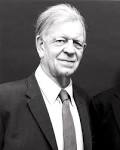
Alec Skempton |
birth Alec Skempton Alec Skempton (died 2001), English pioneer of soil science and engineering historian. |
|
07 Jul 1914

Goddard's first rocket patent |
Goddard's first rocket patent In 1914, Robert Goddard, age 31, was issued a U.S. patent, the first of the 214 he would obtain in his lifetime as a pioneer rocket scientist. This patent was for a “Rocket Apparatus” (U.S. No. 1,102,653) which described the multi-stage rocket concept. A liquid-fueled rocket design was issued a patent the following week, on 14 Jul 1914, also titled “Rocket Apparatus.” It described a combustion chamber, with expander nozzle, into which liquid fuels are pumped. This was his second rocket patent. On 16 Mar 1926, his test launch, the first ever of a liquid-fuelled rocket, managed to propel a 10-ft long projectile to a height of 41-ft (12.5 m). Its 2.5 second flight covered a distance of 184-ft at an average speed of 60-mph. The fuel was a combination of liquid oxygen and gasoline. |
|
15 Jul 1914

Gavin Maxwell |
birth Gavin Maxwell Born 15 Jul 1914; died 7 Sep 1969 at age 55. Scottish naturalist and author best known for his book Ring of Bright Water (1960), the story of his life in the western Highlands of Scotland with two pet otters. In 1945, he bought the small Hebridean island of Soay, to create a shark fishery there, but his effort was undercapitalized and failed. He found the sharks elusive, difficult to land in a small boat and he underestimated the refrigeration capacity required to keep the stored meat edible. However, the experience became the source for his book Harpoon Venture (1952). His later enterprises included encouraging Eider Ducks to breed on the small island of Eilean Dudh so that the down from their nests could be harvested, and establishing a collection of wild animals indigenous to Scotland to create a private zoo. |
|
29 Jul 1914

Transcontinental phone call |
Transcontinental phone call In 1914, transcontinental telephone service began. It was celebrated with a telephone conversation between Thomas A. Watson in San Francisco and Alexander Graham Bell in New York City repeating their historic conversation from 1876. Wendover, Utah, was the site of the completion of the first transcontinental telephone line in 1914. The day's state-of-the-art in signal transmission technology, loading coils, had reached its limit, barely able to deliver a faint voice from New York to Denver until Western Electric's high-vacuum tube for amplifying sound in telephone cables was developed in 1913. |
|
29 Jul 1914

Baron Marcel Bich |
birth Baron Marcel Bich Born 29 Jul 1914; died 30 May 1994 at age 79. French inventor who built his business empire by creating throwaway Bic pens, razors and lighters. In 1945, Marcel Bich and his friend, Edouard Buffard, acquired an empty factory shell near Paris, France, and soon developed a thriving business, producing parts for fountain pens and mechanical lead pencils. Later, Bich spent two years developing his ballpoint pen design, and in 1949, he was able to produce a reliable, low cost ballpoint pen. In 1973 the Bic Lighter was introduced in the U.S., followed by Bic Shavers, first introduced in 1976 |
|
01 Aug 1914

Swiss National Park |
Swiss National Park (biology and medicine) Swiss National Park (Parc Naziunal Svizzer) established in the Engadin region of Switzerland. |
|
13 Aug 1914

Grace Bates |
birth Grace Bates Grace Bates (died 1996), American mathematician. |
|
15 Aug 1914
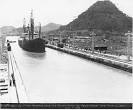
Panama Canal opened |
Panama Canal opened In 1914, the Panama Canal was officially opened by an American ship sailing from the Atlantic to the Pacific Ocean. The United States fomented a rebellion to get the land for this canal...encouraging Panamanians to break away from Colombia. Before the Panama Canal was built, sea trade had to gone all the way around South America's sometimes stormy Cape Horn. The Panama Canal crosses a small mountain range with a series of huge locks. |
|
01 Sep 1914
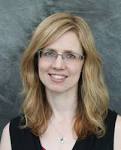
Martha |
Martha (biology and medicine) Martha, the last known passenger pigeon, dies, in the Cincinnati Zoo. |
|
05 Sep 1914

Royal Navy |
Royal Navy (technology) British Royal Navy scout cruiser HMS Pathfinder (1904) is sunk by German submarine U-21 in the Firth of Forth (Scotland), the first ship ever to be sunk by a locomotive torpedo fired from a submarine. |
|
14 Sep 1914

Robert S. Dietz |
birth Robert S. Dietz Born 14 Sep 1914; died 19 May 1995 at age 80. Robert Sinclair Dietz was an American geophysicist and oceanographer who set forth a theory (1961) of seafloor spreading (a term he coined), in which new crustal material continually upwells from the Earth's depths along the mid-ocean ridges and spreads outward at a rate of several inches per year. While a student Dietz identified the Kentland structure in Indiana as a meteoric impact site. His professors steered him toward marine geology. He became the founder and director of the Sea Floor Studies Section at the Naval Electronics Laboratory (1946-1963). He also achieved prominence by studying meteorite craters, both on Earth and on the moon and arguing that these impact craters were common. He died of a heart attack. |
|
06 Oct 1914

Thor Heyerdahl |
birth Thor Heyerdahl Thor Heyerdahl (died 2002), Norwegian ethnographer and explorer, leader of the Kon-Tiki expedition. |
|
13 Oct 1914
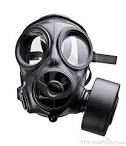
Gas mask |
Gas mask In 1914, Garrett Morgan invented and patented a gas mask, a breathing device consisting of a canvas hood placed over the head. A double tube extended from the hood and merged into a single tube at the back. The open end held a sponge soaked with water to filter out smoke and to cool incoming air. On 25 Jul 1916, Morgan made national news for using the gas mask to recover several men trapped after an explosion in a new waterworks tunnel beneath Lake Erie at Cleveland, Ohio. After the rescue, Morgan's company received requests from fire departments around the country who wished to purchase the new masks. The Morgan gas mask was later refined for use by U.S. Army during World War I. One of Morgan's other inventions was an early traffic signal (patented in 1923). |
|
14 Oct 1914

Raymond Davis, Jr. |
birth Raymond Davis, Jr. Raymond Davis, Jr. (died 2006), American chemist and physicist, winner of the Nobel Prize in Physics (2002). |
|
21 Oct 1914
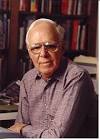
Martin Gardner |
birth Martin Gardner Martin Gardner (died 2010), American writer on recreational mathematics. |
|
23 Oct 1914
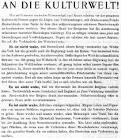
Manifesto of the Ninety-Three |
Manifesto of the Ninety-Three (other s) Manifesto of the Ninety-Three proclaimed in Germany. |
|
28 Oct 1914
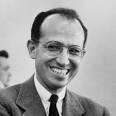
Jonas Salk |
birth Jonas Salk Jonas Salk (died 1995), American medical researcher. |
|
05 Nov 1914
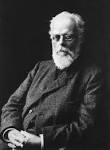
August Weismann |
death August Weismann August Weismann (born 1834), German evolutionary biologist. |
|
06 Nov 1914
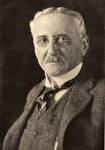
Jacques Loeb |
Jacques Loeb (biology and medicine) Jacques Loeb publishes a paper on artificial parthenogenesis in sea urchins. |
|
10 Nov 1914
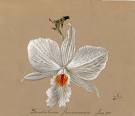
Lydia Shackleton |
death Lydia Shackleton Lydia Shackleton (born 1828), Irish botanical artist. |
|
26 Nov 1914

Karl von Frisch |
Karl von Frisch (biology and medicine) Karl von Frisch publishes his first significant paper on honey bee behavior, "Der Farbensinn und Formensinn der Biene". |
|
20 Dec 1914
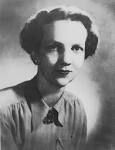
Mary Helen Wright Greuter |
birth Mary Helen Wright Greuter Mary Helen Wright Greuter (died 1997), American historian of astronomy. |
|
24 Dec 1914
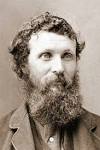
John Muir |
death John Muir John Muir (born 1838), Scottish American geologist and ecologist, founder of the Sierra Club. |
|
25 Dec 1914

Thyroxine |
Thyroxine In 1914, the thyroid hormone, thyroxine, was first crystallized by biochemist Edward C. Kendall of the Mayo Foundation in Rochester, NY. Thyroxine controls the cellular rate of carbohydrate metabolism and of protein synthesis and breakdown. On Dec 23, he began evaporating an ethanol solution of a sample of the acid-insoluble fraction of thyroid glands removed surgically from patients. It left a white crust surrounded by a ring of yellow waxy material. Adding ethanol now redissolved the waxy material, but not the white crust. On Christmas Day, he dissolved some of the white crust in ethanol and sodium hydroxide. A few drops of acetic acid precipitated crystals. This throxine was fully active in relieving the symptoms of thyroid deficiency in hypothyroid patients. |